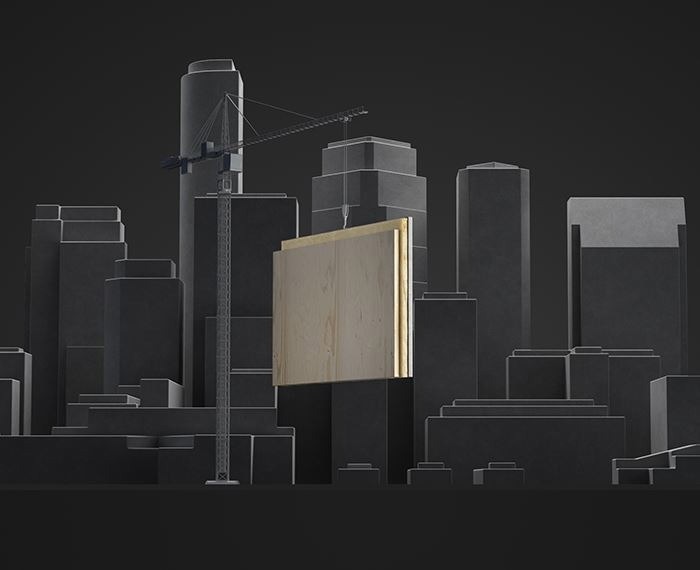Tackling climate change calls for radically changing the materials we build with. Metsä Wood explores and develops wood-based solutions that complement and replace carbon-intensive construction materials, considerably lowering the CO2 emissions of buildings. Innovation plays a key role on the path towards net zero infrastructure.

Image Credit: Metsä Wood
Adding Wood Where It Makes a Difference
The built environment is estimated to account for 37% of CO2 emissions worldwide. Rigorous re-engineering of how we build is needed as the amount of raw materials used for construction is predicted to double by 2060 – with steel and concrete being already major contributors to global greenhouse gas emissions.
“Most of the carbon footprint of construction comes from the building materials. The construction industry is now seeking more sustainable alternatives, so we are seeing growing interest in construction material based on renewable raw materials,” says Jaakko Anttila, Executive Vice President at Metsä Wood.
Using wood originating from sustainably managed forests in construction is an efficient way to lower the weight of the building and the CO2 emissions throughout the life cycle. By replacing steel and concrete with wood emission savings can be achieved without compromising the structural performance, fire or sound insulation qualities. Wood also has unique carbon storing qualities, and using wood instead of concrete allows the construction process to reduce its dependence on the extraction of non-renewable resources like sand and gravel, which are associated with detrimental effects to biodiversity. The storage time of biobased carbon in wooden construction elements can be further extended by reuse models.
Sustainability for the Builders of Tomorrow
Metsä Wood is currently developing different kinds of solutions with its partners to reduce the carbon footprint of buildings and to increase the carbon storage capabilities. For example, the company has initiated a cross-industry collaboration to create synergy benefits by combining concrete and wood in future building structures. It has been estimated that a hybrid wall element combining concrete and Kerto® LVL can achieve up to 70 percent lower carbon footprint compared to traditional concrete wall element.
“Metsä is actively investing in the future. In many applications our products replace fossil and other non-renewable materials and reduce greenhouse gas emissions, which is an important global climate action. We are increasing the production capacity of long-life wood products which have carbon-storing benefits.” says Maija Pohjakallio, VP Climate and Circular Economy at Metsä Group.